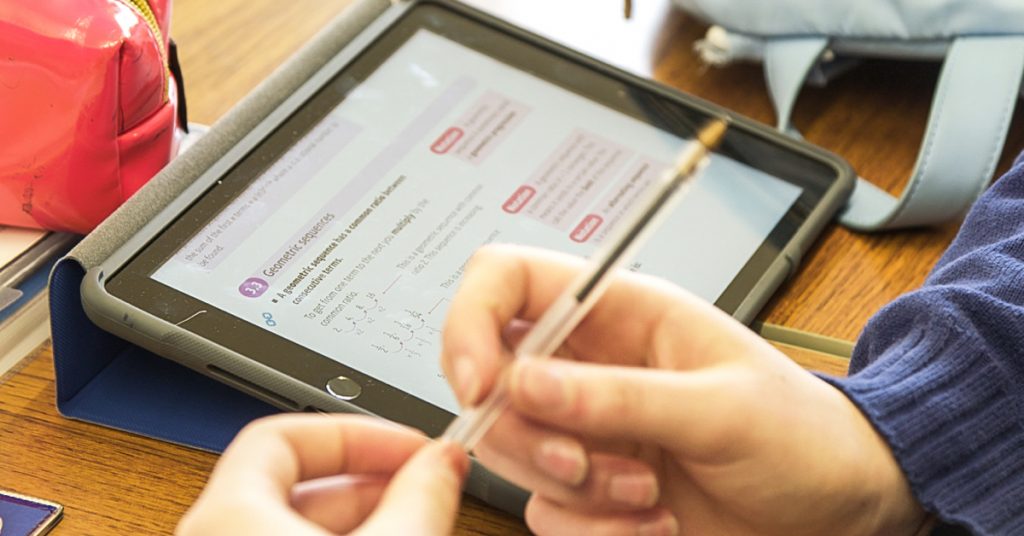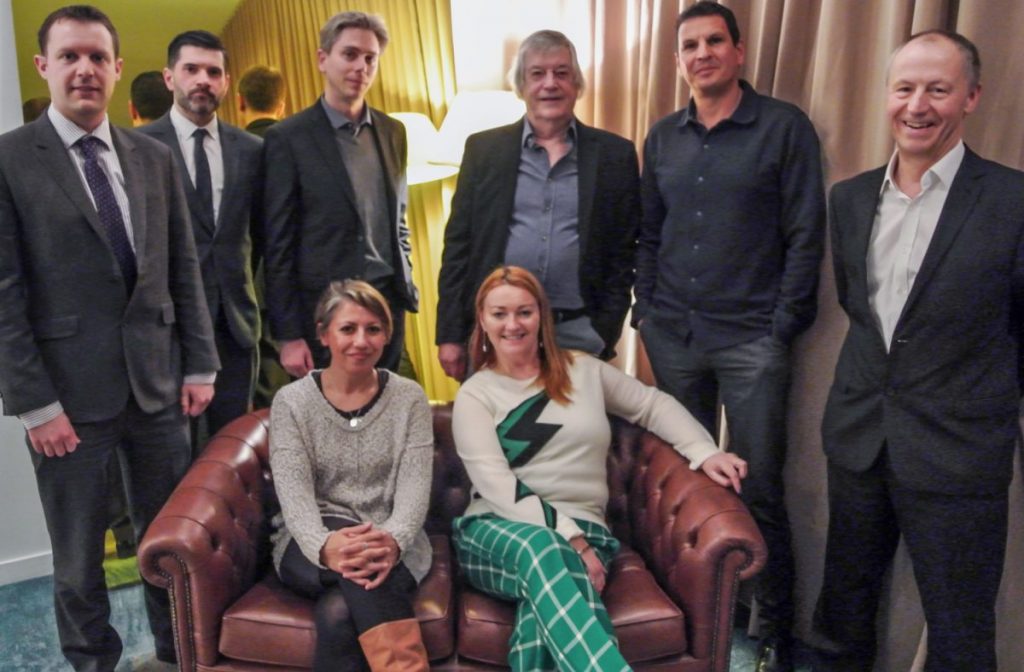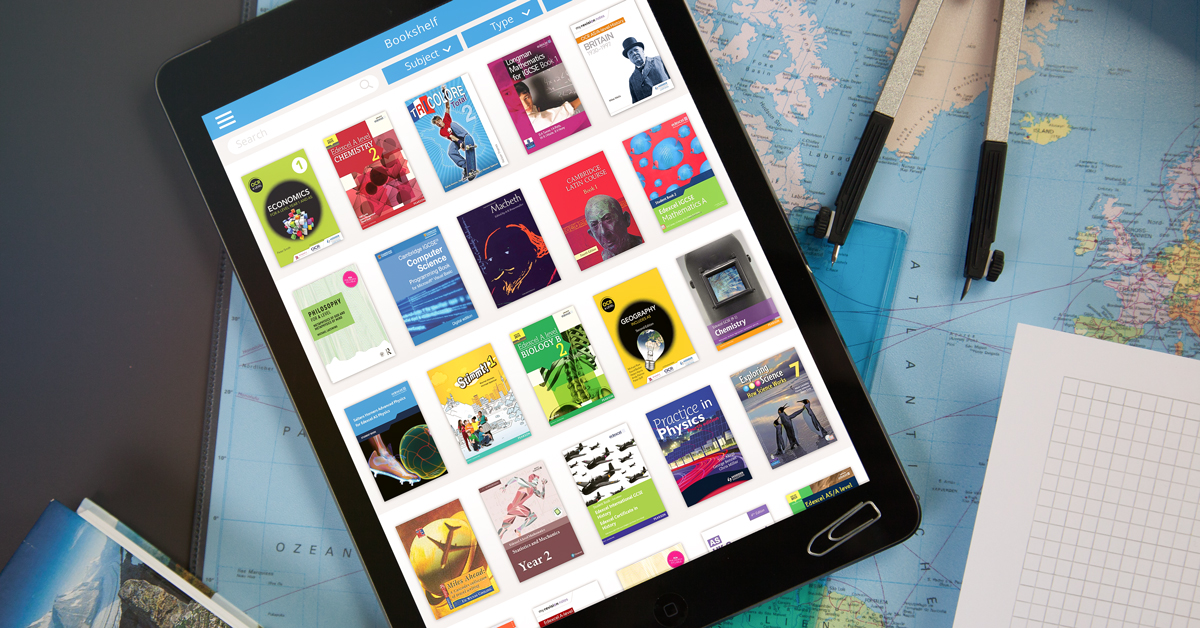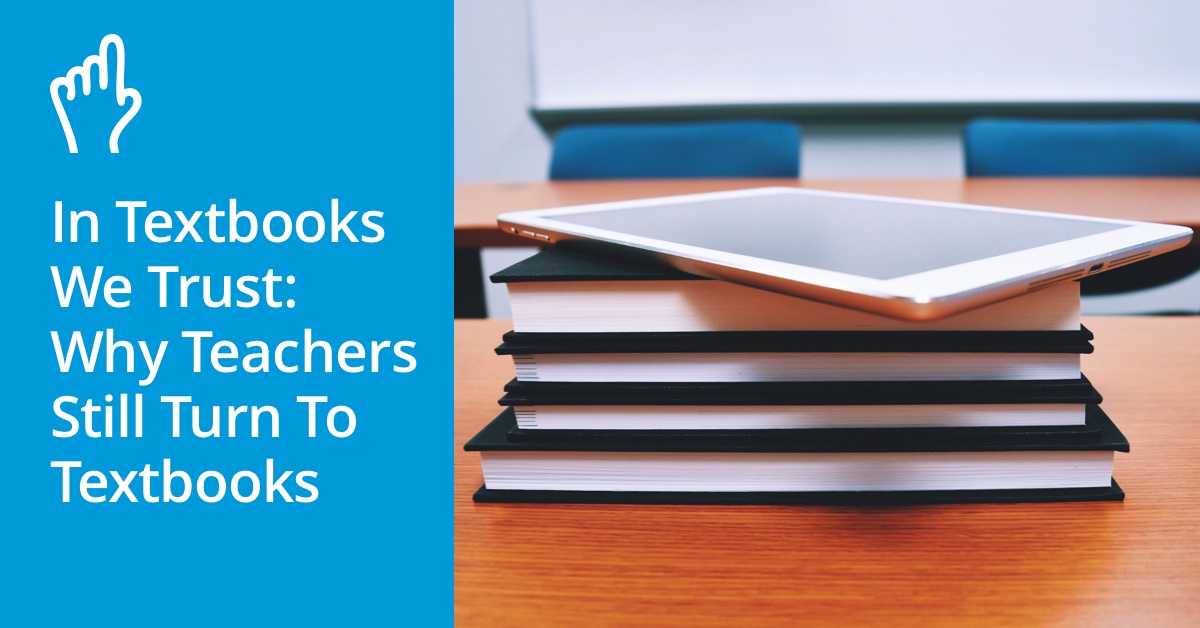1:1 discussion panel in London for classoos
Compared with the business world, education has been slow to adopt technology. But while there is no silver bullet for embedding technology for the purpose of learning and teaching in schools, there is plenty of ammunition from which to construct a series of arguments and practices to change school culture for that purpose.
The good news is that, despite persistent media sniping about the effectiveness of investment in technology for schools, the landscape is already changing. Schools are adopting technology, and learning and teaching is changing. The problem is that it’s very patchy, with many schools moving ahead while others are struggling or even falling behind.
This was the picture that emerged at a special education discussion about 1:1 computing held in London and organised by classoos UK, an innovative, UK-based company (founded in Israel) that has created a new and compelling digital platform for textbooks for schools. The debate, involving experienced educators working with technology for learning and teaching, was considering “1:1 computing – what needs to happen before schools use the powerful devices that almost all children already have access to?”
Tim Clark is sales director of classoos UK and he chaired the panel session. His assessment of digital device adoption is that virtually everyone in business uses a smartphone, tablet and computer and is clear about why, how and where to use them. Most secondary school students have their own mobile phones, usually turned off at school, and their own tablets or computers at home. Should they be able to use technology with the same ease as the rest of us for their learning? “Would that be a good thing?” he asked, “and if so what has to occur to make that happen? What has to change?”
Amir Golan, chief executive and co-founder of classoos, established five years ago, revealed that 40,000 students now use this service in Israel. 25,000 of them for all the textbooks they need, the full curriculum. It started with schools with 1:1 digital devices – “especially tablets or iPads” – but has moved on more recently with BYOD (bring your own device) schemes. “It isn’t so much about the device as to how you use content,” he said. The trend was for increased digital content with publishers increasingly adding audio and video clips to enrich their text books.
“But we see in Israel what we see here,” he added. “Many people are anxious about change – so what do we need to do to reassure them?”
Technology no longer the problem
There is still much debate in the UK about 1:1 computing and BYOD, but this panel avoided arguing about the definitions. Most of the participants use a variety of technologies and online platforms, and there was a high level of consensus. And technology is no longer seen as the overly expensive and unstable element in the schools ICT puzzle.
For them the technology and its availability is a given if schools are to maximise their use of the exciting digital products and services now available. Which tablet or device and infrastructure are no longer issues – they are down to school pedagogy and preference. The key issues to emerge were vision and strategic leadership, changing school culture and practices and improving teacher confidence.
Of course swirls in the discussion arose from issues like the digital divide, safety and data security, but there appeared to be far more to celebrate than fear. The most up-to-date school feedback came from Matt Britland, director of digital strategy at Lady Eleanor Holles School, London, who is supporting the introduction of classoos in his school. “I recently rolled out a 1:1 iPads scheme to 686 students and about 120 members of staff in the senior school,” he explained. “We also have a 1:1 iPads scheme with Years 5 and 6 but those devices stay at school. They get a device allocated at the beginning of the year and they use them throughout.”
Supporting teachers
The key to successful implementation was staff training and making sure staff and students have access to all the resources they need (there is also a digital leaders scheme for teachers and students). “It’s quick,” he added. “We bring all our teachers together and make sure they know everything that’s available to them.” Where he found that teachers and students were unaware of how this technology could be used appropriately, he could support them. And a system of digital leader teachers and students is in place to extend and embed that support and encourage independent use and experimentation.
One surprise had been that some of the most cynical users had been students who complained that they couldn’t use technology for learning (they thought of them more as devices for playing games or something to use for social media). “I really didn’t understand what that meant and some of it came from parents,” he explained. “Sometimes parents are cynical as well and I completely understand that. But my job is to make sure that everyone understands just how powerful this technology can be.”
Richard Bailey is schools technology manager for the Girls’ Day School Trust (GDST) and was on the panel to explain the importance of developing technology use across the group as a community of schools: “We want to build knowledge and link it to strategy so that the technology is supporting the teaching not driving it.”
Strategic leadership for schools ICT
The Trust’s strategic aspect of technology adoption and its use of digital leaders were of particular interest to an expert in leadership for ICT, Tony Parkin. A former teacher, he was for many years head of technology development for the Specialist Schools and Academies Trust. This involved working on strategy with teachers, and particularly with school leadership teams, work that linked with the National College for School Leadership’s highly successful Strategic Leadership of ICT (Slict) scheme. A recent visiting lecturer at the University of Roehampton and now a consultant working with start-ups, he lamented the move from a college of school leadership to a teacher regulation agency and the gradual loss of a national strategic view for ICT.
“The danger of one-to-one is that it became a mantra,” he observed. “Rather than people looking strategically at the benefits – and lack of benefits – from one-to-one, the trouble is that one-to-one done badly can be isolating for each individual. What I always try to do is to get people working in pairs with technology because often the most important thing that happens is interaction between the people sharing the device. So for me there is a place for one-to-one and I would say that sharing textbooks is a nightmare so, if using a device as an alternative to a printed textbook, 1:1 is probably the only way to go.”
“When talking about devices people tend to speak in sweeping generalisations and some people say 1:1 is the answer in every case. I don’t think it is. I think it’s good for things like textbook substitution but not for some of the practical activities where working in pairs is more preferable.”
Nina Iles, a technology consultant with BESA (the British Educational Suppliers Association) agreed: “When it comes to the use of 1:1 technologies in the classroom, the experienced teacher will, I imagine, instinctively know when and how to use those technologies to enhance the learning and teaching experience.” However, it’s possible that some teachers may not always know how best to use EdTech and/or digital resources – or where to find them. She revealed that, while working with TES, and more recently going to TeachMeets she had gained insight into how many teachers share ideas and digital resources. Indeed, such experiences had inspired her to make a career move and to focus on the world of EdTech, helping to connect educators with suppliers of innovative and time-saving services. She now works with suppliers of digital products and services, many of whom are start-ups.
1:1 close to default provision
University of Roehampton computing lecturer Miles Berry (“training the next generation of outstanding teachers “) pointed out that institutions were developing new expectations of students. “I think that in areas where there is a degree of independent autonomous learning taking place, one-to-one is pretty close to default provision,” he commented. “In fact one-to-one wasn’t a sufficiently high ratio for my students this morning; most of them had two screens with them and some had three. By the time they get to university they are expected to bring a laptop with them. It’s not a course requirement but trying to do the course with just the institution providing technology would be incredibly frustrating.”
“They have their phones and the phone is where they connect and contact. it’s also the medium on which they take notes so we don’t feel we have to control what they do with this technology. Similarly young children are using iPads.”
While not every child has an iPad, “increasingly there are those who do”. And parents who can afford to do so now buy mobile phones for their children “as a means to keeping them safe”.
Mobile technology is an area where educators sometimes see 1:1 provision “as a threat or a disruptor”, he added. “Taking students along to the computer lab and keeping an eye on what they are doing is very expensive and is still used in many schools. Once you go down the 1:1 route the tendency will be for them to explore, experiment and find things which perhaps you wouldn’t want them to find. There is a tension there between the benefits of the device and connecting to everyone, and our desire to control what happens.”
1:1 an answer to computing rooms
These aspects were seen as positives at Lady Eleanor Holles School. “Exploring and independence were reasons why we wanted them to have the devices in the first place,” said Matt Britland. “We had two computing rooms that were booked up pretty much all the time and very difficult to get into. It was seen that the only time you could use technology in any form was if you were in a computing room and therefore technology didn’t exist outside the confines of those places.” 1:1 changed all that.
The school’s mobile culture comes over as a rather benevolent programme. Yes, there are rules about what can go on the tablets (there are age-related blacklists for apps) but they are personalised enough for the students to fully engage with them and see them as their own. Smartphones can be used at lunchtime and they don’t need them in class because they have their iPads. (The panel consensus was that although smartphones have great potential for learning, not many schools can manage them adequately yet.)
Interestingly the classoos platform has helped with technology adoption at Lady Eleanor Holles School because it has been “quite an easy win” for teachers who are a little concerned about ICT. Of course, they are extremely familiar with textbooks and so are comfortable with the digital versions. From here it’s a small step to experimenting with their extra functions and learning more. The 1:1 works well in my school but it’s an independent school and our parents pay for the devices so we don’t have to supply them. I understand how that model might not work in areas of deprivation.”
Schools ICT underpinned by trust
Underpinning schools technology there has to be a strong layer of trust. In fact one obstacle to mobile adoption has been the perception that there are attendant behaviour issues, said Michael Shaw, director of the TES resources website, the world’s biggest. And he should know as the journalist who coined the media term “happy slapping”. Schools had to balance risk with workload, he said, and it was very unfair that teachers were often branded as a “generation of Luddites” when they were nothing of the kind. He also mentioned children’s rights campaigner Baroness Beeban Kidron’s suggestion that mobile tech should have a “school” setting much like “flight mode”.
As someone with a strong appetite for books via the Kindle app on various devices he feels that what students want is broadly what he wants – access to his material on any device at any time or place. And he felt that digital assessment and exams were part of the inevitability of wholescale acceptance of technology in schools.
Schools are still testing limits of trust as they move into new areas, particularly where there is uncertainty about data issues. Miles Berry mentioned the Turnitin anti-plagiarism service used for students’ essays in higher education. It is one of the kinds of services students are expected to use but they weren’t given an option to opt out if they might feel uncomfortable with it.
Other services used by teachers and students – for tasks like sharing and assessing work – carried their issues of personal data (and companies were building services and profiting from that user data). However, so far there were few instances of rejection although pressure groups and governments were starting to take an interest.
Nina Iles felt that suppliers of educational technologies need more ways to communicate with school leaders and teachers the benefits of using technology to enhance the teaching and learning experience It was a theme picked up by Tony Parkin who mentioned teachers’ “Banda moment” when they were first introduced to word processors. Banda reproduction machines had been their instant source for printing worksheets and suchlike. They could get away with new versions for some time but then they would have to start again.
Word processing allowed them to keep their work and amend and renew it rather than simply start again. It was an instant step forward. He felt that schools had to carefully weigh up the opportunities offered by digitisation against the costs of traditional printed resources like textbooks and photocopying (some schools spend up to £60,000 a year on this, said Tim Clark). And he was not sure whether this was being done properly.
No silver bullet but a series of arguments
Michael Shaw felt that when these pros and cons were considered, digitisation would win through. “As a Yorkshireman”, Tony Parkin said his focus would be on time and money. “There is no silver bullet,” he added, “but there is a whole series of arguments that, when you put them all together, it’s a no-brainer. I just don’t know whether anyone has put that set of arguments together convincingly enough. Maybe they have but I haven’t come across it yet.”
Strategic leadership and community development were seen as crucial to spreading and implementing these ideas. There was consensus that there were schools, like Shireland Collegiate Academy in the Midlands, that were consistently moving ahead with technology for learning. However, to maintain consistency and stability they had to put in place distributed leadership and succession planning. The landscape was littered with schools that had burned brightly but then gone backwards because a headteacher or key department heads had moved on.
The current lack of national leadership was an issue here. Miles Berry was pleased that technology had put “the means of production and distribution” in the hands of schools. He had even come across a school in Singapore where the students helped to produce the school’s own text books.
However, national encouragement would be a great help too. “Part of me says the school is the best place for decisions to be made,” he said. “but the lack of encouragement that ‘technology is going to help here’ that we’ve had over the last few years does seem to have done a certain amount of harm to the take-up of technology in schools or at least the consistency of that take-up. We have shining examples of schools taking up technology and running with it with amazing results, but unless we have that encouragement from central government, or central government agencies, it ends up with an inconsistent picture. And you have two sorts of schools: those that ‘get’ technology and use it productively and those that don’t.”
At grassroots level the community building going on in groups of schools like the Girls’ Day School Trust was seen as extremely positive and a way to take teachers and students forward. It was a far better model than schools observing others and copying.
Amir Golan said that a community sharing experience is “quite different”. “You can go further and faster than by just listening. You have to be involved.”
Tim Clark felt that changes to the curriculum offered a perfect point of change for schools but most of them felt that, with so much change in the air, they were simply not ready. “Teachers will never be ready so there is no point talking about being ready,” quipped Amir Golan. “You have to do it or there is no point. You will not be ready next year if nothing is happening this year.
“If you jump into the water and make mistakes then you will learn from that: there is no other way to do it. Each school has its own DNA and you can learn from other schools. The day you start is zero day and from that point you start to learn.”
The discussion was refreshingly free of ‘which device’ and ‘which platform’ sidetracks. Maybe that’s because there is already interesting user feedback. Michael Shaw revealed that feedback from TES online users indicated that those downloading resources tended to be using laptops and desktops while those scouring news and job advertisements favoured phones and tablets (even students are starting to access GCSE materials).
Similarly, the feedback from students indicated a large take-up for tablets at primary level, said Miles Berry, with gravitation back to laptops in secondary where they are required to write a lot more and keyboards give better support.
Breaking the cycles
One striking element to emerge from the discussion was that when you take the sheer newness of devices away from the technology debate clear themes emerge that have little to do with tech and everything to do with people and support. After all, thousands of years ago writing on tablets of stone was considered as modern as we think of our own digital tablets.
And of course time reveals important cycles, as telling as they are funny. Like digital leaders, a concept that builds on earlier ideas. Bringing the debate to a conclusion, Tony Parkin commented: “In 1977 I left a school that was moving from being a direct grant grammar school to becoming an independent school to go and work for the Inner London Education Authority (ILEA) which, at that point, was putting a professional educational technologist in every school in London.
“That is what happened in 1977, which is why I jumped ship. I went to work for the ILEA because there were going to pay me to be a professional educational technologist.” As quick as a flash came the rejoinder from Matt Britland: “That was the year I was born Tony.”
The panel
Matt Britland, director of digital strategy at Lady Eleanor Holles School, London,
Richard Bailey, schools technology manager with the Girls’ Day School Trust
Tony Parkin, former teacher and expert in leadership for ICT Was head of technology development for the Specialist Schools and Academies Trust and now lecturer and consultant.
Nina Iles, a technology consultant with BESA (the British Educational Suppliers Association)
Michael Shaw, director of TES Resources website and former deputy editor of TES
Amir Golan, co-founder and chief executive classoos, established five years ago in Israel
Tim Clark sales director at classoos UK
Also in attendance:
Fiona Mclean, PR consultant
Merlin John, journalist






